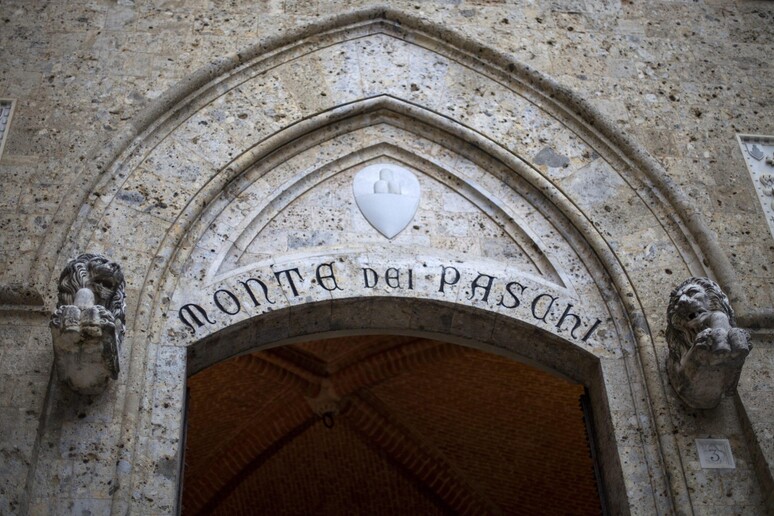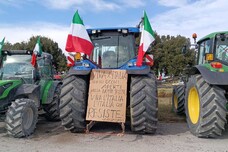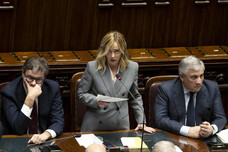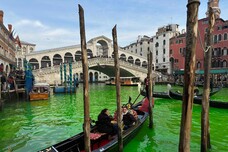The European Commission on
Tuesday approved 5.4 billion euros in State aid for the
precautionary recapitalisation of Monte dei Paschi di Siena
(MPS) bank after the in-principle accord reached on June 1 by
Economy Minister Pier Carlo Padoan and Competition Commissioner
Margrethe Vestager.
Padoan, for his part, said that the MPS rescue plan was a
turning point for the Italian banking system and that the
Treasury would take up its 70% stake in July.
A statement from the EC said: "The two conditions for this
agreement are now both fulfilled, namely the European Central
Bank has confirmed that MPS is solvent and meets capital
requirements, and Italy has obtained a formal commitment from
private investors to purchase the bank's non-performing loan
portfolio."
The Commission said that in order to approve Italy's support
for the troubled Tuscan lender, "MPS's shareholders and junior
creditors have contributed €4.3 billion to limit the use of
taxpayer money as required by EU state aid rules".
The restructuring of MPS will be completed in five years
during which the bank plans to "re-orient its business model
towards retail customers and small and medium-sized businesses,
strengthen its efficiency and improve its credit risk
management", the Commission said.
As part of this, MPS's senior management will be subject to a
salary cap of 10 times the average salary of MPS employees.
Another key element of the plan, the EC said, is the disposal
of a 26.1-billion-euro non-performing loan portfolio on market
terms by transferring it to a privately-funded special vehicle.
This operation will be partially funded by the Atlante II
fund.
MPS will also sell the lower risk senior notes of the vehicle
to private investors.
To facilitate this sale, it will apply for State guarantees
on market terms for the senior tranche under an Italian State
guarantee scheme (the so-called "GACS", an aid-free scheme
approved by the Commission in February 2016).
Padoan, for his part, told a Rome press conference that the
rescue of MPS is "an extremely important element for the bank
and the Italian banking system and a further turning point after
last week's deal on the Veneto banks".
"It's a plan that gives certainties, a sustainable timeframe
for the bank which will have a very important level of capital".
The Treasury will have a 70% stake in MPS after the bank's
precautionary recapitalisation, Padoan said.
Ministry official Alessandro Rivera said the operation
will be 8.1 billion overall and the Treasury will underwrite a
3.9 billion hike by the end of July, while 1.5 billion will be
used to buy back junior bonds in the autumn after burden sharing
has been applied, for a final disbursement of 5.3 billion euros.
The restructuring plan "gives certainties" and "a credible
horizon" for the bank which will have "an important level of
capital and will shed almost all its non-performing loans, for a
gross value of more than 28 billion euros, by the first half of
2018", Padoan said.
The MPS rescue has enabled Italy "not to offload the cost of
bail-outs onto taxpayers," Padoan said, by envisaging a "limited
use" of public resources.
Padoan said he was "confident public money will not only be
recovered, but there will also be a bonus" as Monte dei Paschi
di Siena improves over the years following its rescue.
Padoan said he had the "utmost confidence" in the current top
management of Monte dei Paschi di Siena, when asked if they will
be confirmed.
The rescue ends "an 'annus horribilis', which started in June
of last year with the stress test, we had the total awareness we
were at the epicentre of the Italian, and not only Italian,
banking crisis", MPS President Alessandro Falciai said, vowing
that "the bank will be very flourishing" and "among the most
solid in the EU".
There will be no firings in the restructuring of MPS, CEO
Marco Morelli said.
The State will exit the bank's capital in 2021, Falciai said.
ALL RIGHTS RESERVED © Copyright ANSA











